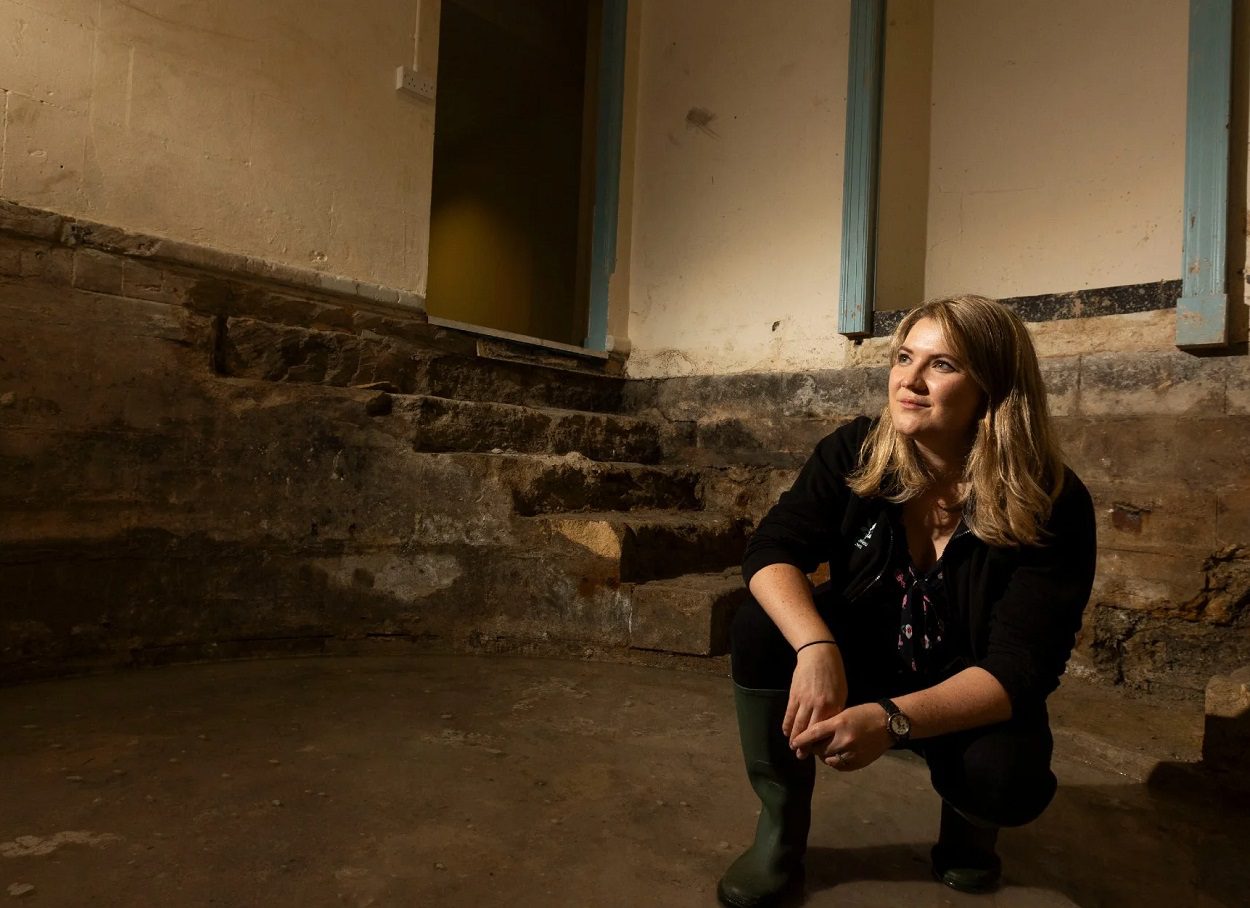Archaeologists conducting excavations in the basement of the Bath Assembly Rooms have uncovered an 18th century cold bath.
The Bath Assembly Rooms, located in Bath, England, were designed by John Wood the Younger in 1769 to provide a place for social gatherings, including balls, concerts, teas, and gambling. ‘Polite society’ flocked to the Assembly Rooms, including the novelists Jane Austen and Charles Dickens, and the painter Thomas Gainsborough.
Excavations in the basement have unearthed the remnants of a once-popular health practice: a Cold Bath, which was used for ‘taking the waters’. According to the researchers, the cold bath could be the only one of its kind located in a historic assembly room, providing unique insights into 18th century society.
Bath was renowned for its hot mineral water and emerged as sought-after destination for thermal bathing since the Roman period when it was known as Aquae Sulis, meaning “the waters of Sulis”.
In the 18th century, medical professionals endorsed cold baths as a therapeutic measure for both men and women to address various physical and mental ailments. They prescribed a routine of frequent, if not daily, immersion in cold water for brief intervals, followed by a swift warming process.
According to a press announcement by the National Trust: “There was a surge in plunge pools and cold baths in private houses and estates along with public facilities in Bath and other towns, however the location of the one at the Assembly Rooms suggests it would have been more exclusive, and for those wanting a more private cold bath experience.”
The Cold Bath was one of many rooms in the building. The New Bath Guide of 1778 noted “…a commodious cold-bath, with convenient dressing-rooms,” and there were rooms for billiards, coffee and gambling along with spaces for balls and concerts, making it a ‘one-stop-shop’ for all leisure, health and entertainment needs.
Underneath one end of the Ballroom lies a trio of chambers: the central space houses the Cold Bath, flanked by dressing rooms on either side. The excavation process entailed the removal of a subsequent flooring structure that had been laid over the Cold Bath, along with the removal of a substantial volume of debris. This revealed the ancient steps leading into the bath, its meticulously crafted stone walls, and an alcove designed to accommodate a statue or sculpture.
It is probable that individuals seeking access to the bath would have arrived, potentially by sedan chair, and gained entry from the street through a staircase located in the northeast corner of the Assembly Rooms, rather than utilising the main entrance to the building.
During WW2, German bombing by the Luftwaffe damaged the Assembly Rooms. In the years after the war, the cold bath was filled in with rubble and buried beneath a 20th century floor.
Tatjana LeBoff, National Trust Project Curator explained: “There are many elements of this discovery that are still a mystery. The Cold Bath at the Assembly Rooms is highly unusual. It is a rare, if not unique, surviving example, and possibly it was the only one ever built in an assembly room.”
“It is unlikely men and women of status would have used the Cold Bath together so there could have been different days or times when they were available to each. We are still researching records, letters, diaries and other documents to see what more we can find out that will help us piece it all together,” added LeBoff.
Header Image Credit : National Trust – James Beck





